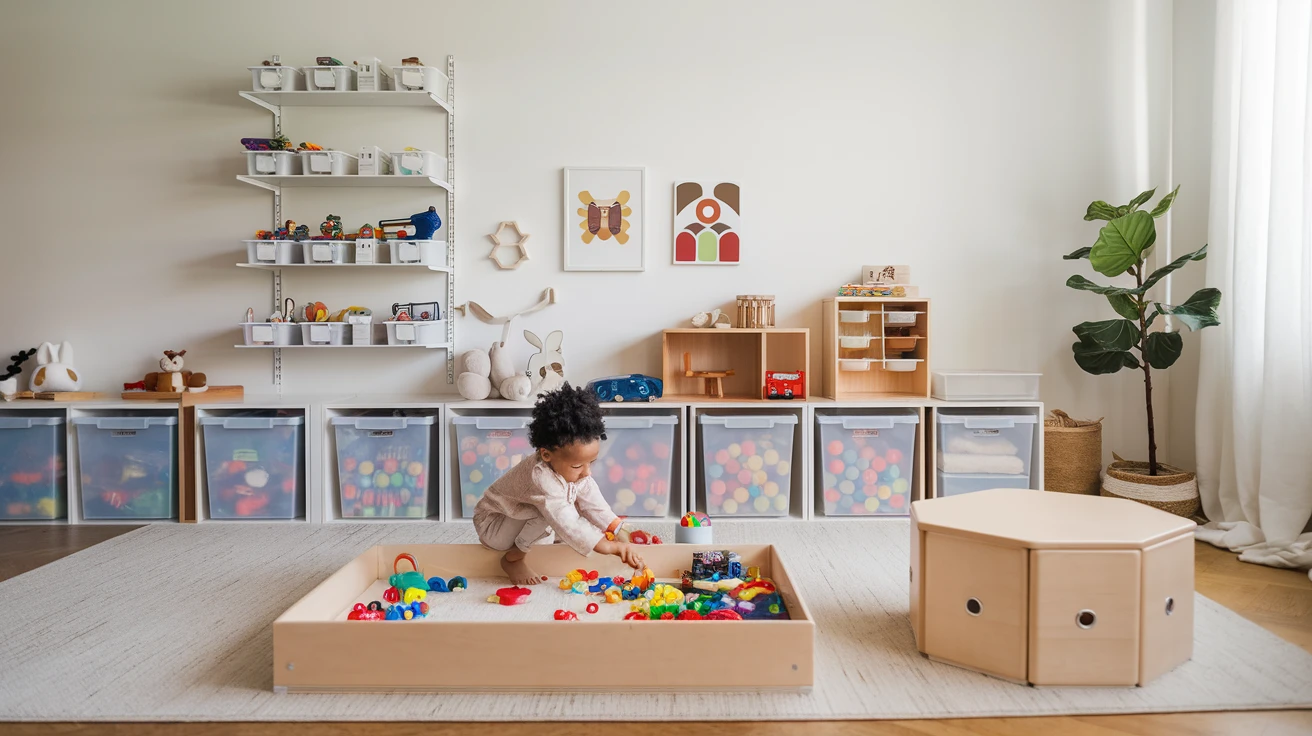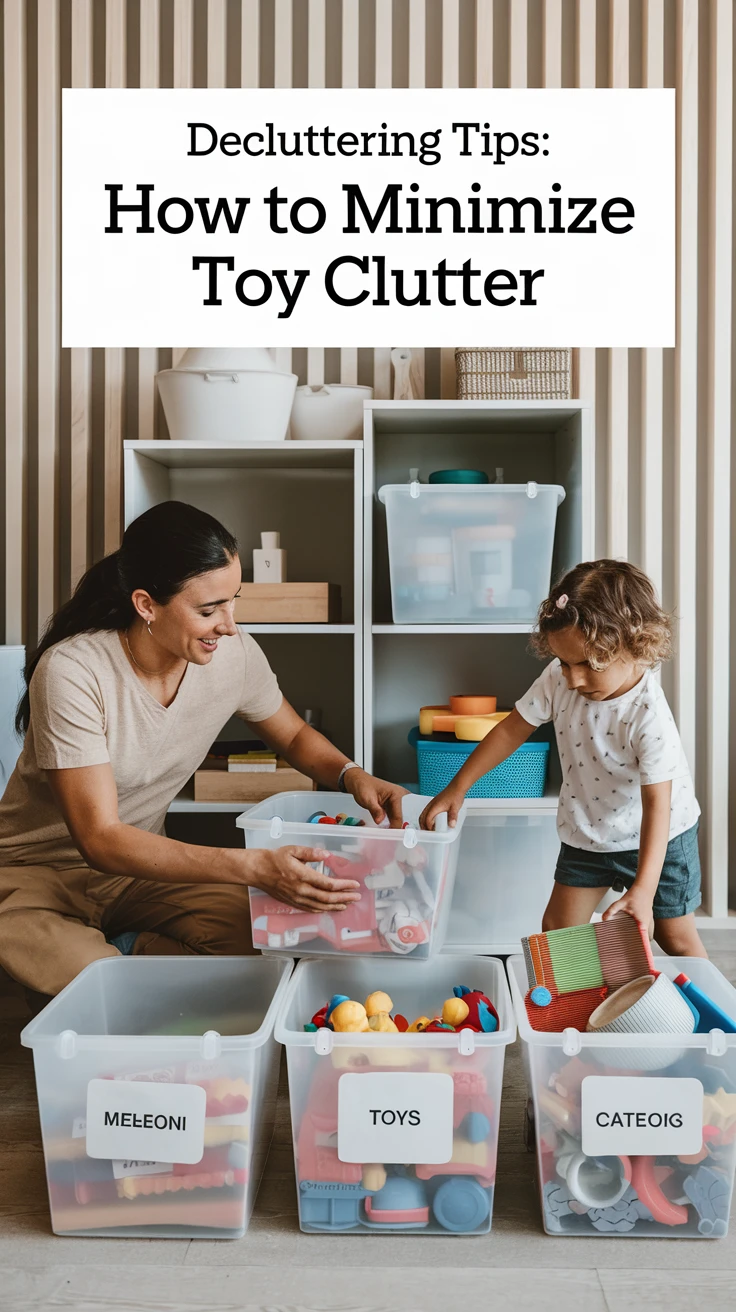
Understanding the Toy Clutter Conundrum
Let’s be honest, if there’s one thing that can make a usually organized home feel like utter chaos, it’s toy clutter. We all love seeing our little ones engage in their playtime adventures, but what happens when the toys start taking over the living room, the kitchen, and even the bedroom? It’s like a small toy apocalypse! I’m not exaggerating when I say that stepping on a stray LEGO piece is a rite of passage for every parent. But fear not, because I’ve been through the trenches and emerged victorious. Let’s dive into some toy storage decluttering tips that will help reclaim your home without stifling your child’s creativity.
The Emotional Roller Coaster of Decluttering
Decluttering toys can be an emotional roller coaster, both for you and your child. I remember the first time I tried to convince my son to part with his fifth fire truck. He looked at me like I was asking him to give away a puppy. It’s crucial to navigate these emotions with care, as toys often hold sentimental value for children. Encourage them to be part of the decluttering process, making them feel involved and empowered rather than deprived.
Step-by-Step Decluttering Process
Alright, let’s get down to business. A systematic approach is the best way to tackle toy clutter. Here’s a step-by-step guide that has worked wonders for me:
1. Assess the Toy Situation
- Take a good look at all the toys in the house. Make an inventory if you need to.
- Identify toys that are broken, missing parts, or no longer age-appropriate.
- Decide which toys truly bring joy and which ones are just taking up space.
2. Organize and Categorize
This step is all about sorting. Group toys into categories such as educational toys, outdoor toys, and stuffed animals. This makes it easier to see what you have and what you can let go of. I once found three identical puzzles in different corners of the house. Trust me, categorizing is a game-changer!
3. Set Limits
The key to maintaining a decluttered toy space is setting boundaries. Decide on a specific area for toys, and stick to it. Whether it’s a playroom, a corner of the living room, or a child’s bedroom, having a designated space helps keep toy sprawl in check.
4. Implement a Rotation System
A toy rotation system can breathe new life into old toys. Every few weeks, swap out a selection of toys, keeping playtime fresh and exciting. This not only reduces clutter but also stimulates your child’s imagination by allowing them to rediscover forgotten treasures.
Creative Storage Solutions
Storage solutions can make or break your decluttering efforts. Embrace creativity and functionality with these ideas:
1. Multi-functional Furniture
Invest in furniture that doubles as storage. Ottomans with hidden compartments, beds with drawers, and benches with cubbies are lifesavers. My living room ottoman is a superhero in disguise, hiding an array of board games and action figures.
2. Use Vertical Space
Wall shelves are your new best friend. Utilize vertical space to store books, small toy bins, or even display favorite toys as part of the decor. It’s amazing how much floor space you can free up by thinking vertically.
3. Clear Bins and Labels
Transparent bins are a must-have for toy organization. They allow kids to see what’s inside without creating a mess. Add labels for each bin to make clean-up time a breeze. I once used colorful stickers for labeling, and my daughter loved it so much, she started organizing her toys just for fun!
Maintenance Tips for a Clutter-Free Home
Once you’ve conquered the toy clutter, keeping it that way is the next challenge. Here are some tips to maintain your newly organized space:
1. Regular Decluttering Sessions
Schedule regular decluttering sessions, perhaps monthly or seasonally. This prevents clutter from building up again and gives you a chance to reassess your child’s interests and needs.
2. Encourage One-In, One-Out
Adopt the one-in, one-out rule for new toys. For every new toy that enters the home, an old one must go. This helps keep the toy collection manageable and encourages mindful consumption.
3. Involve the Kids
Make tidying up a fun game for your children. Set a timer and see how many toys they can put away in five minutes, or create a reward system for keeping their play area tidy. My kids love the challenge, and it’s a win-win for everyone!
Personal Anecdote: The Battle of the Stuffed Animals
Let me share a personal story that taught me a valuable lesson. My daughter had a mountain of stuffed animals, each with its own unique backstory. I knew it was time to declutter, but she was attached to every single one. We decided to donate some to a local children’s hospital, and she got to choose which ones. The joy on her face when she realized her toys would bring happiness to other kids was priceless. It was a powerful lesson in giving and decluttering.
Conclusion
Decluttering toy clutter doesn’t have to be a daunting task. By involving your children, setting boundaries, and implementing creative storage solutions, you can create a clutter-free environment that encourages play and imagination. Remember, it’s not just about minimizing mess but maximizing joy in your home.
Key Takeaways
- Involve your child in the decluttering process to make it a positive experience.
- Utilize creative storage solutions like multi-functional furniture and vertical space.
- Maintain a clutter-free home with regular decluttering sessions and the one-in, one-out rule.
FAQs
- How do I get my child involved in decluttering?
Make it a fun activity by involving them in sorting and decision-making. Use rewards and games to keep them engaged.
- What should I do with toys that are still in good condition?
Consider donating them to local charities, schools, or children’s hospitals.
- How often should I declutter toys?
Regularly, perhaps monthly or seasonally, to keep clutter at bay.
- What storage solutions work best for small spaces?
Utilize vertical space with wall shelves and invest in multi-functional furniture.
- How can I teach my child to be mindful about new toys?
Implement the one-in, one-out rule and encourage thoughtful decision-making.
- What if my child doesn’t want to part with any toys?
Explain the benefits of decluttering and involve them in choosing donation recipients.
- Are there any specific toys that should always be kept?
Keep toys with sentimental value or those that encourage educational development.
- How do I prevent toy clutter from returning?
Stick to designated toy areas and regularly reassess your child’s interests.
- What are some creative ways to store stuffed animals?
Use hanging baskets, hammock nets, or wall-mounted shelves to store and display them.
- How do I handle toys with missing parts?
Attempt to find or replace missing parts, or repurpose or recycle the incomplete toy.
